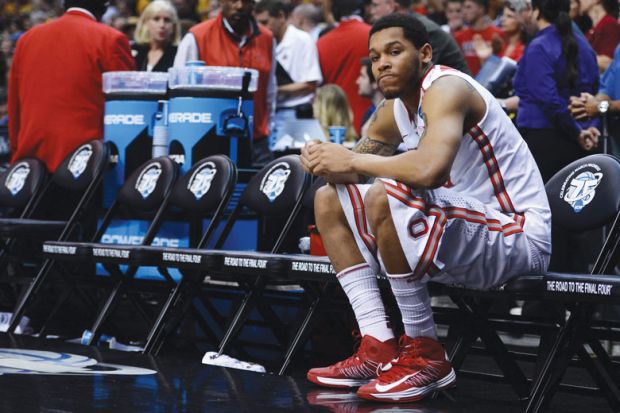The uneasy and sometimes destructive co-dependence of US colleges and their billion-dollar sports programmes is approaching a showdown on equity and race that experts predict will either break the system or, with long-sought reform, save it.
US colleges reap some $14 billion (£11 billion) a year from sports, largely from running men’s football and basketball programmes that generate the attention and income of professional leagues, but pay their mostly black athletes almost nothing beyond scholarships.
That blatant inequity, already under sustained challenge, is now being pushed to breaking point by the twin pressures of the coronavirus pandemic and the Black Lives Matter movement.
On pay, the National Collegiate Athletic Association (NCAA) has been fighting in court to keep limits on the education-related compensation that student athletes can receive, while relenting under pressure to let players make their own commercial advertising deals.
On the revenue side, this year, the NCAA has already cancelled its cultural captivation known as the March Madness basketball tournament, and it now faces cutting back or losing the even more lucrative fall football season.
For major competitors in the college sports arena, such as Ohio State University and Louisiana State University (LSU), that could mean losses in the region of $140 million apiece. By comparison, said LSU’s immediate past president, F. King Alexander, the university receives about $115 million from the state for its overall academic enterprise.
“This is a crisis of unheard-of proportions,” said sports and public policy expert Andrew Zimbalist, a professor of economics at Smith College, of the economic and political shifts in collegiate athletics rippling through an already stressed system of higher education.
US college sports have seen much greater gender equity since the 1972 federal law prohibiting sex discrimination in education. And the proven benefits of organised sports in shaping the lives of young athletes should not be overlooked, said Dionne Koller, a professor of law at the University of Baltimore and director of the Centre for Sport and the Law.
But the lack of player pay in the two big-revenue sports, combined with mostly white coaching staffs taking salaries running into the millions of dollars, “meets the very definition of economic exploitation”, said Professor Koller.
Some, such as reading teacher Mary Willingham, went even further: she left her job at the University of North Carolina at Chapel Hill after suffering “retaliation” for publishing data in 2014 on 183 of the university’s athletes that showed that most could read at no better than eighth-grade level.
“It’s a familiar system − a little bit like slavery,” Ms Willingham said. “People don’t like to hear that, and that gives people a bad taste in their mouths, but really it is a form of modern-day slavery when you think about it.”
A major breakthrough came last October, when the NCAA agreed to let student athletes profit from product sales involving their own names and images, after the state of California insisted on that right for its players. Congress has also been staging hearings on the treatment of college athletes.
Such movements could pave the way, Professor Koller said, for students to see improvements such as better health-related payments and protections.
Players deserve the same basic right to compensation as their fellow students working behind the concession stands making an hourly wage, said Alan Milstein, an adjunct professor of law at Temple University and lawyer in Philadelphia who has represented several of them in court cases.
Student athletes show no sign of seeking a full-blown challenge of their market value in a multibillion-dollar industry, Professor Milstein added. “It’s the wrong impression to try to give, that these guys are so upset with their circumstance,” he said. “They’re having the time of their lives.”
Ms Willingham strongly disagrees, having watched dozens of student athletes from very poor upbringings do all they could to send money home to extended families in desperate circumstances.
“I think if these young people were white instead of black that were playing college football and basketball, we would not be treating them the same way,” she said. “They would have had representation many, many years ago, and to me it’s blatantly obvious.”
Dr Alexander, now president of Oregon State University, said he expects pressure from the Black Lives Matter movement will somehow help reduce the injustice in student athlete earnings.
He is also among institutional leaders who believe their universities should work jointly to substantially lower their overall spending on sports. Congress could help, he has argued, by granting college sports an antitrust exemption that would allow enforceable caps on team spending.
That, Dr Alexander said, would bring “tremendous fundamental change” to intercollegiate athletics.
Professor Koller also sees the need for reduced overall spending and better treatment of the players. Somehow forcing cost restraint on college sports, she said, “might be the one thing that saves it”.
后记
Print headline: Sport ‘exploitation’ row reaches endgame




